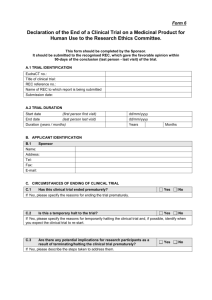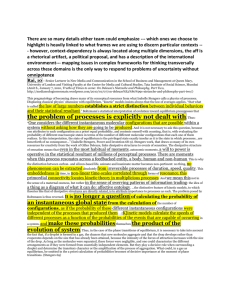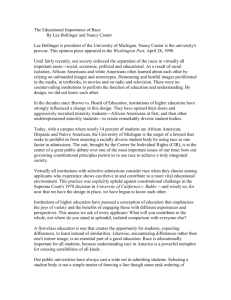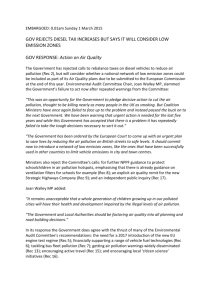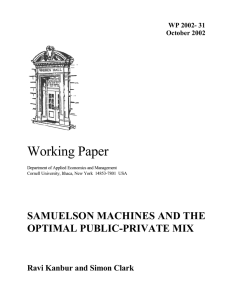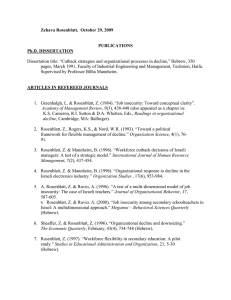Defamation - Public Official, Public Figure
advertisement
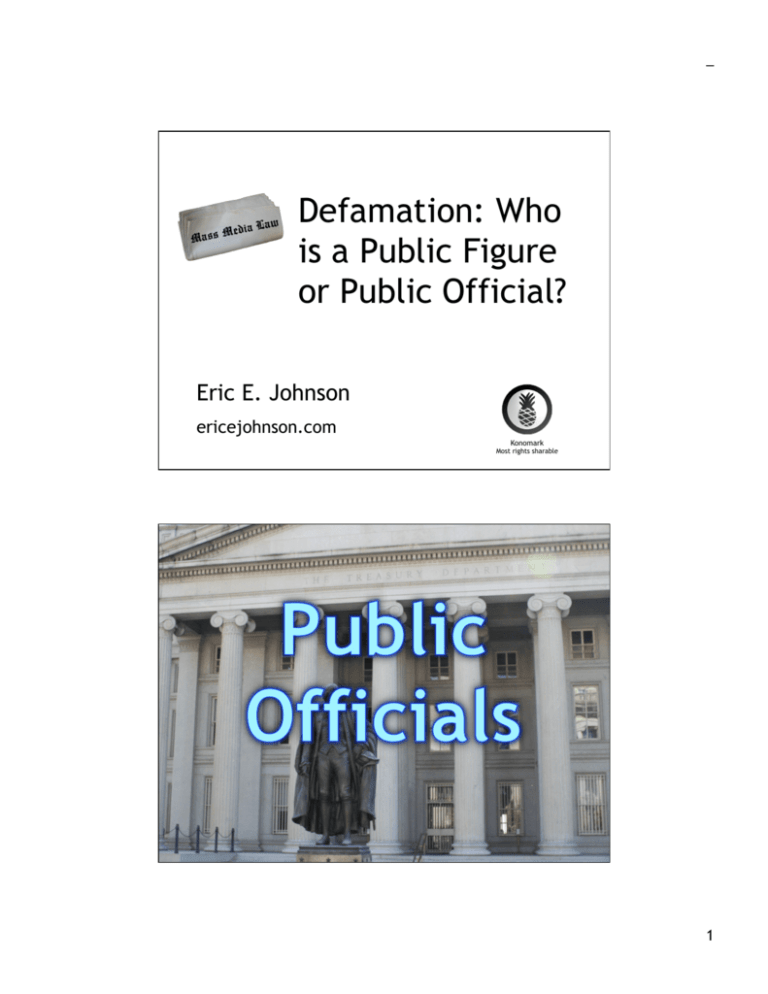
_ Defamation: Who is a Public Figure or Public Official? Eric E. Johnson ericejohnson.com Konomark Most rights sharable 1 _ Rosenblatt v. Baer, 383 U.S. 75 (1966) • In Rosenblatt, SCOTUS offered additional guidance on when someone qualifies as a public official. • Whether someone is a public official is not defined by state law standards. It’s a federal constitutional question. • No precise lines can be drawn. • Two key issues were identified that have been looked at as a two-part test. Rosenblatt v. Baer two-part test for public officials 1. Apparent governmental authority: Do the “government employees …have, or appear to the public to have, substantial responsibility for or control over the conduct of governmental affairs”? 2. Independent public interest: Does the plaintiff’s “position in government [have] such apparent importance that the public has an independent interest in the qualifications and performance of the person who holds it, beyond the general public interest in the qualifications and performance of all government employees”? 2 _ Public official? • U.S. naval officer, rank of captain, skipper of a destroyer escort • Yes. Arnheiter v. Random House (9th Cir. 1978) 3 _ Public official? • Police officer with duties as a “normal street patrolman” of the lowest rank in a town of 30,000 • Yes. Gray v. Udevitz (10th Cir. 1981) Public official? • Police informant who received no salary, but was reimbursed some expenses • No. Jenoff v. Hearst (4th Cir. 1981) • But noting: “We do not rely solely on Jenoff's lack of formal government position for our conclusion that he is not a public official. It is conceivable that an individual holding no formal public position, and standing in no employment or even contractual relationship with government, nevertheless may participate in some governmental enterprise to such an extent that the policies underlying New York Times Co. v. Sullivan ... would demand that he or she be classified a public official.” 4 _ Public official? • Financial aid director at a public college • Yes. Van Dyke v. KUTV (Utah 1983) 5 _ Acquiring “publicness” • The defamation itself generally cannot make a private person a public person. • I.e., stories published after an initial defamatory story will not convert a private person into a public figure. • The benchmark for analysis is when the initial defamatory story is published. Acquiring “publicness” • Plaintiffs can be “general purpose” or “limited purpose” public figures. – General-purpose public figures always face the additional constitutional hurdles. – Limited-purpose public figures face constitutional hurdles only when the topic is the one for which they are public. • Plaintiffs can acquire publicness involuntarily 6 _ Public figure? • Bose – makers of the heavily advertised Bose Wave Radio • Yes. Bose v. Consumers Union (Consumer Reports magazine) (U.S. 1984) 7 _ Public figure? • Telemarketer of subscriptions to newsletters employing 500 telephone representatives and reaching 15,000 customers per week • Yes – limited-purpose public figure. American Future Systems, Inc. v. Better Business Bureau of Eastern Pennsylvania (Pa. 2007) Public figure? • Government contractor that provided civilian interrogators for U.S. Army intelligence brigade • Yes. CACI Premier Technology, Inc. v. Rhodes (4th Cir. 2008) 8 _ Public figure? • Larry Klayman, founder and former chair of Judicial Watch, a publicinterest law firm; frequent guest on TV, cable, radio; and has "celebrity status within the non-profit legal/ political community" • Yes – general-purpose public figure. Klayman v. Judicial Watch (D.D.C. 2009) Public figure? • Rev. Norwood Thompson, Jr., pastor of the First Zion Baptist Church in New Orleans, civically active, and the subject of some local media coverage regarding his activities • Yes – general-purpose public figure. Thompson v. Emmis Television Broadcasting (La. App. 2005) 9 _ Public figure? • Local television news reporter who broadcast more than 1,000 stories, participated in at least four public charitable events and considered herself a local celebrity. • No. Wayment v. Clear Channel Broadcasting (Utah 2005) Public figure? • Owner of business that customized jetskis who posted to internet news group rec.sports.jetski and who was interviewed by SPLASH magazine • Yes – limited-purpose public figure. Hibdon v. Grabowski (Tenn. App. 2005) • Court noted that rec.sport.jetski is an internet site that “is accessible worldwide.” 10 _ "Hibdon himself knowingly and consciously sought publicity for his jet ski business by his initial postings on rec.sport.jetski. The controversy began following Hibdon's posting on the news group of the success of his jet ski modifications, prior to the publishing of the defamatory statements made by the Defendants. The controversy was “public” due to the international reach of the Internet news group rec.sport.jetski, the national circulation of SPLASH Magazine, as well as the significance of the claims being asserted by Hibdon [“builder of some of the fastest jet skis on planet Earth”].” Hibdon v. Grabowski (Tenn. App. 2005) IMPORTANT NOTE: confusing ≠ confused A word of caution about considering the doctrine alongside the realotheticals: If you find it all confusing, it doesn’t mean you are confused – rather, it’s an indicator of your understanding. In many fields, and with public-figure/public-official issues particularly, lower court decisions can be characterized as at odds with high court guidance. The difference is worth paying attention to, because how the law works in practice is at least as important to litigants as how it is characterized by the U.S. Supreme Court. 11


